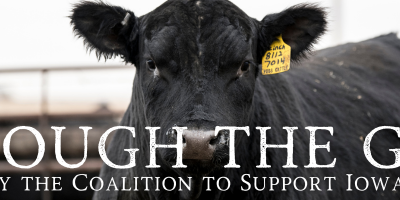CSIF Tips of the Month: August 2013
08-01-2013 in Through The Gate
Rules and Regs Highlight
Prepare your farm for an inspection: No open burning
As DNR gears up to do manure management plan (MMP) inspections around the state, here is a friendly reminder that DNR rules prohibit open burning of combustible materials at confinements.
In effect, this means that no trash from your livestock or poultry operation can be burnt. If you have a stand-alone confinement site, this rule essentially prohibits open burning. If there is an occupied house on the same site as a confinement, it is permissible to burn the residential waste, but not anything from the confinement.
The exceptions to the rule include: trees, tree trimmings and landscape waste; recreational fires; residential waste; paper or plastic pesticide containers and seed corn bags; or if DNR grants a variance.
Additionally, the fire must be ¼ mile away from someone else’s building, livestock area, wildlife area or water source. If the fire causes a nuisance, DNR may order relocation of burning.
For additional tips to prepare your farm for an inspection, review this checklist (PDF file) or call CSIF at 800-932-2436.
Siting Tip
Two farm sites: Do I count them together or separately?
Oftentimes we are asked, “How far apart should two farm sites (with livestock or poultry on them) be to be considered ‘separate?’” The adjacency question isn’t easy to answer and depends on the situation. But it is important to understand as it greatly influences which regulatory threshold your farm falls under and the requirements that must be met.
The first step in determining whether two sites must be considered one is determining if the sites have common ownership and management. If the two sites are owned and managed by the same person, then adjacency must be looked at. (For more information on common ownership and management, please call CSIF at 800-932-2436.)
For confinements, adjacency requirements vary with size. Two confinement operations are considered adjacent if they are separated at their closest points by:
- 1,250 feet if the combined animal unit capacity is 1,000 animal units or less
- 2,500 feet if the combined animal unit capacity is 1,000 animal units or more
Additionally, a confinement is considered adjacent to an open feedlot that has the same species, same ownership and is within 1,250 feet, or if either the confinement or open feedlot alone is over 1,000 animal units.
For two open feedlots to be considered separate sites under Iowa law, they need to be a minimum of 1250 feet apart. Federal law may combine the two if one of the feedlots has a discharge.
Every farm and situation is different. For further explanation and/or answers specific to your farm, please contact CSIF at 800-932-2436.
Quote of the Month
“I wanted to build a monoslope to change my calving operation. I needed someone to tell me the obstacles that I wasn’t seeing, so I called the Coalition because I have been to several of their livestock open houses and trusted them. What I liked about the Coalition is that they asked where I wanted to be a year from now and 10 years from now, so I didn’t do something that would restrict my future plans. The Coalition never asks for a penny and never told me that we were out of time.”
– Dennis Koopman, Benton County cattleman
Recommended News

Through the Gate // January 2025
Stay updated with the Coalition to Support Iowa's Farmers. Discover events and more.
Read More
Through the Gate // December 2024
CSIF Executive Director Brian Waddingham says inspections are on the rise, and it’s important to know not only the rules and regulations, but your rights. “With an
Read More
Through the Gate // November 2024
Are you ready for a DNR inspection? CSIF Executive Director Brian Waddingham says inspections are on the rise, and it’s important to know not only the rules and regulations, but...
Read More